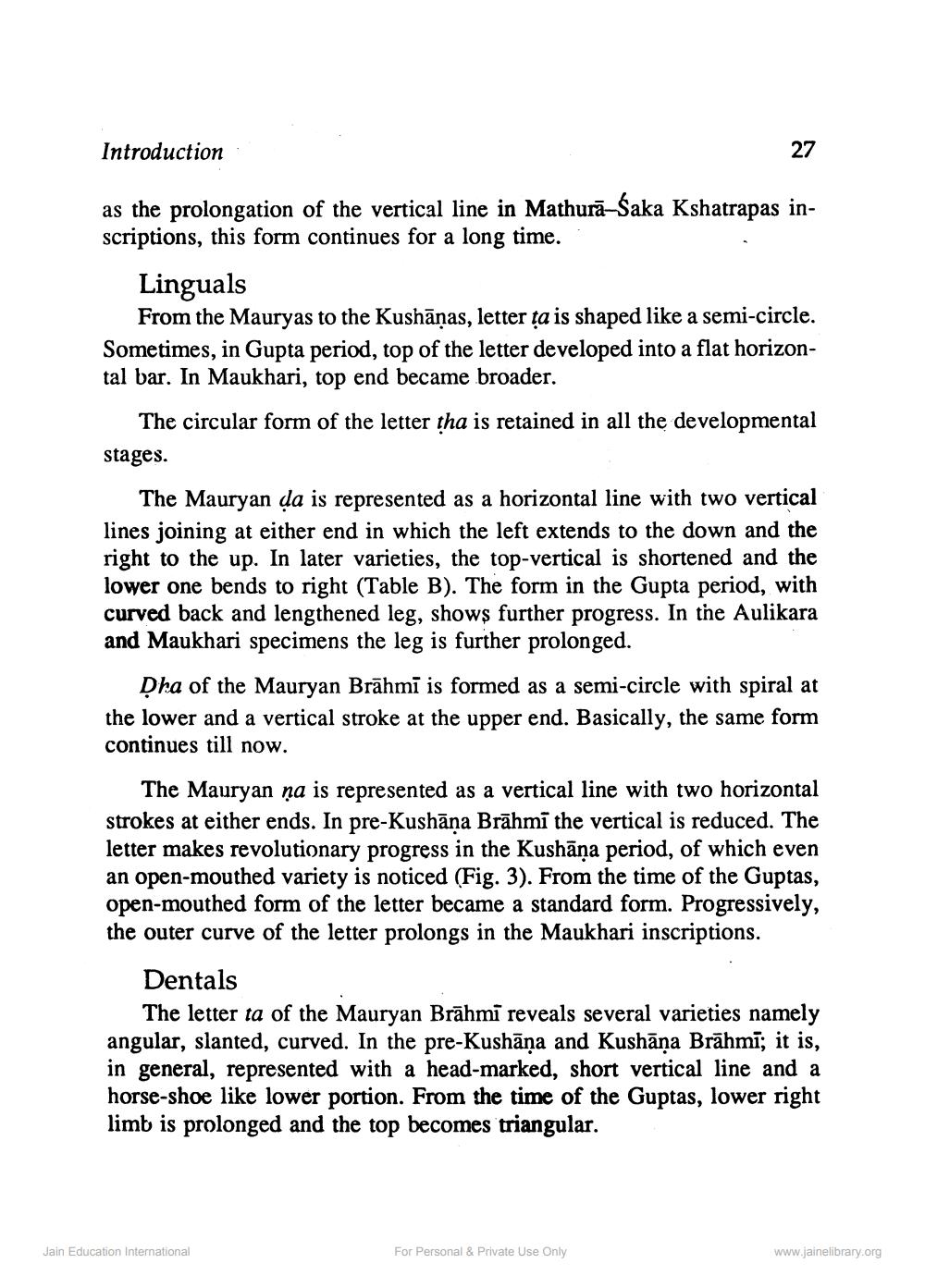________________
Introduction
as the prolongation of the vertical line in Mathurā-Saka Kshatrapas inscriptions, this form continues for a long time.
Linguals
From the Mauryas to the Kushāņas, letter ta is shaped like a semi-circle. Sometimes, in Gupta period, top of the letter developed into a flat horizontal bar. In Maukhari, top end became broader
The circular form of the letter tha is retained in all the developmental
stages.
The Mauryan da is represented as a horizontal line with two vertical lines joining at either end in which the left extends to the down and the right to the up. In later varieties, the top-vertical is shortened and the lower one bends to right (Table B). The form in the Gupta period, with curved back and lengthened leg, shows further progress. In the Aulikara and Maukhari specimens the leg is further prolonged.
Dha of the Mauryan Brāhmi is formed as a semi-circle with spiral at the lower and a vertical stroke at the upper end. Basically, the same form continues till now.
The Mauryan na is represented as a vertical line with two horizontal
kes at either ends. In pre-Kushāna Brāhmi the vertical is reduced. The letter makes revolutionary progress in the Kushāna period, of which even an open-mouthed variety is noticed (Fig. 3). From the time of the Guptas, open-mouthed form of the letter became a standard form. Progressively, the outer curve of the letter prolongs in the Maukhari inscriptions.
Dentals
The letter ta of the Mauryan Brāhmi reveals several varieties namely angular, slanted, curved. In the pre-Kushāna and Kushāna Brāhmi; it is, in general, represented with a head-marked, short vertical line and a horse-shoe like lower portion. From the time of the Guptas, lower right limb is prolonged and the top becomes triangular.
Jain Education International
For Personal & Private Use Only
www.jainelibrary.org




